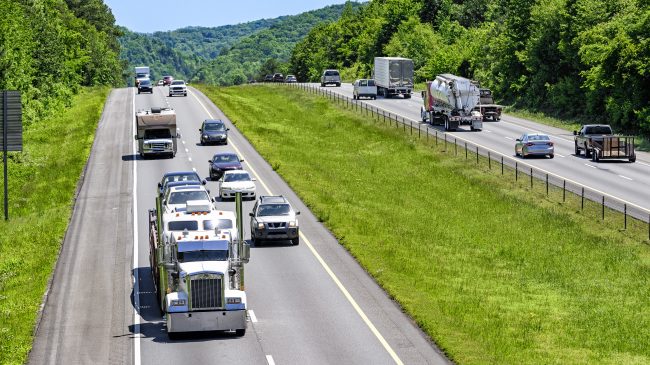For most, it may come as a surprise that Fredericksburg’s roads aren’t yet considered “congested” by national standards. But if your commute is bad now, just give it a few years.
Overall, Virginia’s roads and traffic conditions are deteriorating. Indeed, in an annual report on the overall condition and cost-effectiveness of state-owned highways, Virginia’s system dropped seven positions from 11th to 18th in the country this year. Among the warning signs for the state’s roads: Virginia ranked 28th in the nation in terms or rural Interstate mileage in poor condition; 34th in rural primary roads in poor condition; and 21st in congestion, with over 42 percent of state highways congested. The best news in the report was that the fatality rate on Virginia’s state-operated roads was under the national average, with just 1.1 fatality per 100 million miles traveled.
The biggest problem is traffic congestion, which is expected to quintuple – increasing five times over current levels by 2030 – according to projections in a recent Reason Foundation study.
To accommodate the onslaught of more cars and trucks in coming decades, Virginia will need to prioritize its transportation spending on projects designed to reduce congestion and improve mobility.
Unlike some other states, the Commonwealth hasn’t made the right kind of investments in the road system necessary to keep congestion in check over the long term. As demand increased, road capacity lagged behind. Fredericksburg residents are going to feel brunt of this trend. For example, local planners continue to spend limited resources on bike paths and pedestrian facilities. While these are certainly nice to have in our neighborhoods, they aren’t critical and planners should have to demonstrate why they are a higher priority than projects that could significantly reduce traffic.
Consider Spotsylvania and Stafford counties, which have enjoyed significant growth in recent years. Sitting comfortably between Washington, D.C., and Richmond, many moved for the laid back atmosphere, easy access and larger homes. While still relatively small-the four-county region is now breaking the 300,000 population mark-and roads have simply not kept pace with the growth.
Today, Fredericksburg to Washington, D.C. is one of the area’s worst commutes. Still, for most, congestion remains a minor inconvenience and talk of impending gridlock may not appear to be much of a threat.
But Fredericksburg and Richmond will both be experiencing congestion on par with St. Louis or Cincinnati by 2030. That means spending more time in the car, away from family and friends. Not exactly the laid-back southern quality of life we want to preserve.
Fredericksburg can avoid a congestion meltdown if it invests in its road network now. The Reason Foundation estimates that the Fredericksburg area-Spotsylvania, Stafford, Caroline and King George Counties, needs to add 110 lane miles to the regional road network to stave off congestion. These investments would save 4.7 million hours of delay (time wasted sitting in traffic jams) each year.
While expanding the road network won’t be cheap-about $290 million-the additional road capacity represents the most cost-effective investment road investments in the state, next to those needed for the Richmond-St. Petersburg area. Further, they’re just a fraction of what the local Metropolitan Planning Organization plans to spend over the next 20 years.
Government’s limited resources need to be spent where the benefits are the greatest-where we can move more people and goods. Transit can play a role in easing congestion, but right now too much money is poured into transit-related activities that are unlikely to shorten commutes or ease gridlock. Virginia isn’t alone: upwards of half the transportation dollars spent in the U.S. are spent on transit, which only serves about 5 percent of the commuters.
Significant progress can be made if we simply altered our spending decisions-more funds should go to projects that benefit more commuters.
Furthermore, we must be open and accepting of viable alternatives. Virginia should be praised for being among the first states to pass workable public-private partnership legislation, which brought the Dulles Greenway and Pocahontas Parkway projects to the Commonwealth. Soon commuters will be able to buy a congestion-free trip on I-95 in the form of the High-Occupancy Toll Lanes. When you need to make it to your child’s soccer game, avoid paying late fees at daycare, catch a flight or make it to a meeting, the toll lanes will offer a congestion-free lane that is always moving at the speed limit. Call it congestion insurance.
Virginia can beat congestion. The annual highway performance report concluded, “Virginia has a good system condition managed on a thin budget.” The key to improving the system and shortening commutes will be prioritizing transportation spending on road and transit projects that move the most people and goods. By doing so, Virginia can protect both its economy and the quality of life of its citizens.
